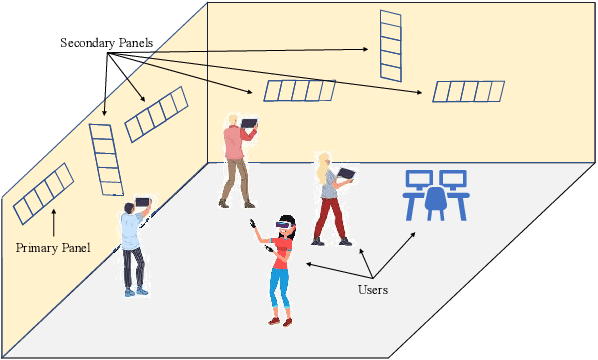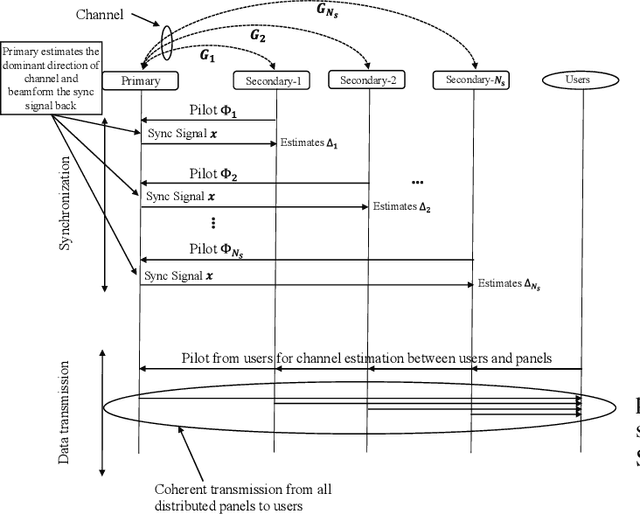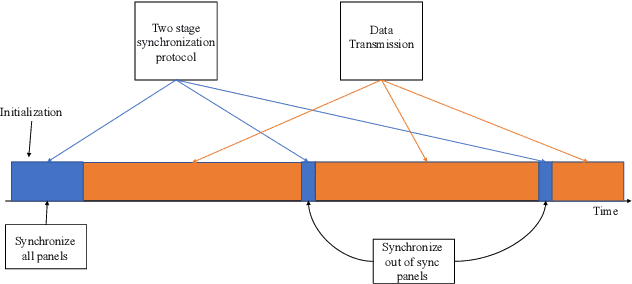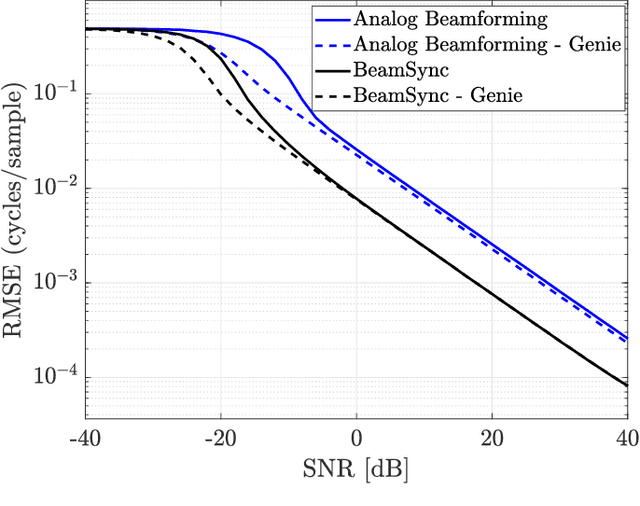Rimalapudi Sarvendranath
BeamSync: Over-The-Air Synchronization for Distributed Massive MIMO Systems
Nov 18, 2023Abstract:In distributed massive multiple-input multiple-output (MIMO) systems, multiple geographically separated access points (APs) communicate simultaneously with a user, leveraging the benefits of multi-antenna coherent MIMO processing and macro-diversity gains from the distributed setups. However, time and frequency synchronization of the multiple APs is crucial to achieve good performance and enable joint precoding. In this paper, we analyze the synchronization requirement among multiple APs from a reciprocity perspective, taking into account the multiplicative impairments caused by mismatches in radio frequency (RF) hardware. We demonstrate that a phase calibration of reciprocity-calibrated APs is sufficient for the joint coherent transmission of data to the user. To achieve synchronization, we propose a novel over-the-air synchronization protocol, named BeamSync, to calibrate the geographically separated APs without sending any measurements to the central processing unit (CPU) through fronthaul. We show that sending the synchronization signal in the dominant direction of the channel between APs is optimal. Additionally, we derive the optimal phase and frequency offset estimators. Simulation results indicate that the proposed BeamSync method enhances performance by 3 dB when the number of antennas at the APs is doubled. Moreover, the method performs well compared to traditional beamforming techniques.
BeamSync: Over-The-Air Carrier Synchronization in Distributed RadioWeaves
Dec 01, 2021



Abstract:In a distributed multi-antenna system, multiple geographically separated transmit nodes communicate simultaneously to a receive node. Synchronization of these nodes is essential to achieve a good performance at the receiver. RadioWeaves is a new paradigm of cell-free massive MIMO array deployment using distributed multi-antenna panels in indoor environments. In this paper, we study the carrier frequency synchronization problem in distributed RadioWeave panels. We propose a novel, over-the-air synchronization protocol, which we call as BeamSync, to synchronize all the different multi-antenna transmit panels. We also show that beamforming the synchronization signal in the dominant direction of the channel between the panels is optimal and the synchronization performance is significantly better than traditional beamforming techniques.
 Add to Chrome
Add to Chrome Add to Firefox
Add to Firefox Add to Edge
Add to Edge